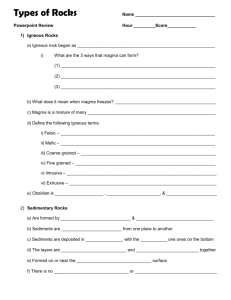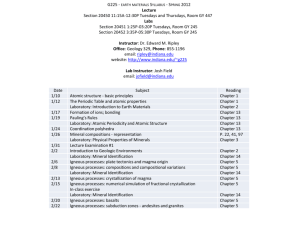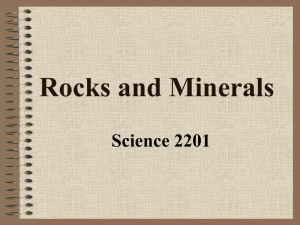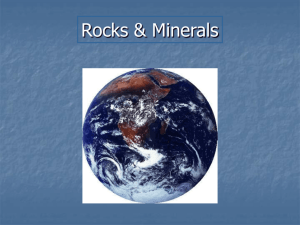Rocks and Minerals Study Guide: Earth Science
advertisement
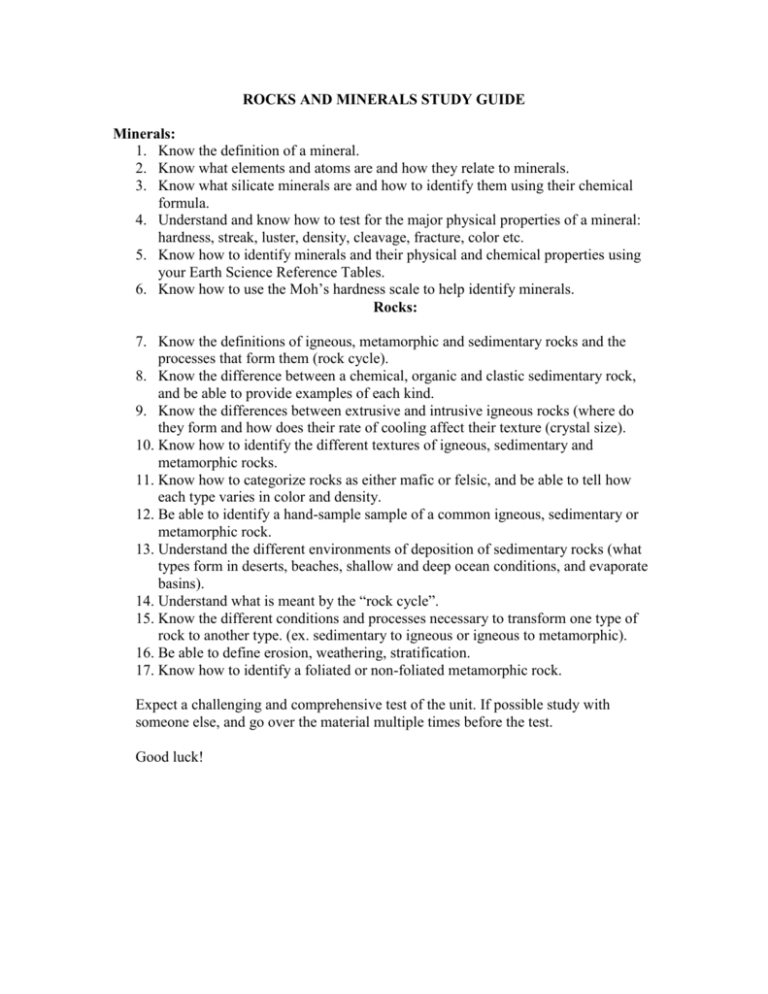
ROCKS AND MINERALS STUDY GUIDE Minerals: 1. Know the definition of a mineral. 2. Know what elements and atoms are and how they relate to minerals. 3. Know what silicate minerals are and how to identify them using their chemical formula. 4. Understand and know how to test for the major physical properties of a mineral: hardness, streak, luster, density, cleavage, fracture, color etc. 5. Know how to identify minerals and their physical and chemical properties using your Earth Science Reference Tables. 6. Know how to use the Moh’s hardness scale to help identify minerals. Rocks: 7. Know the definitions of igneous, metamorphic and sedimentary rocks and the processes that form them (rock cycle). 8. Know the difference between a chemical, organic and clastic sedimentary rock, and be able to provide examples of each kind. 9. Know the differences between extrusive and intrusive igneous rocks (where do they form and how does their rate of cooling affect their texture (crystal size). 10. Know how to identify the different textures of igneous, sedimentary and metamorphic rocks. 11. Know how to categorize rocks as either mafic or felsic, and be able to tell how each type varies in color and density. 12. Be able to identify a hand-sample sample of a common igneous, sedimentary or metamorphic rock. 13. Understand the different environments of deposition of sedimentary rocks (what types form in deserts, beaches, shallow and deep ocean conditions, and evaporate basins). 14. Understand what is meant by the “rock cycle”. 15. Know the different conditions and processes necessary to transform one type of rock to another type. (ex. sedimentary to igneous or igneous to metamorphic). 16. Be able to define erosion, weathering, stratification. 17. Know how to identify a foliated or non-foliated metamorphic rock. Expect a challenging and comprehensive test of the unit. If possible study with someone else, and go over the material multiple times before the test. Good luck!







